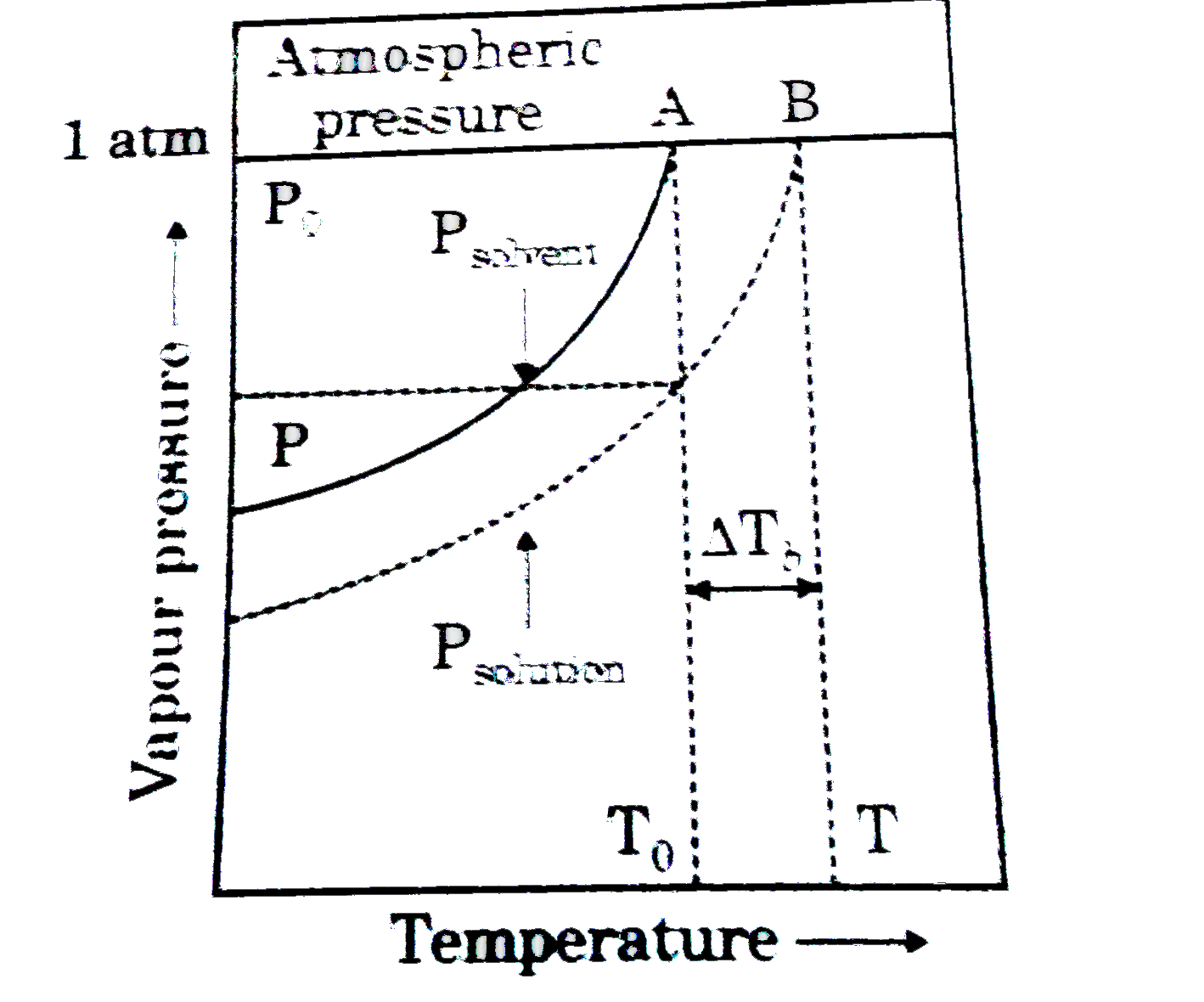Will the elevation in boiling point be same if 0.1 mol of Sodium chloride or 0.1 mol of sugar is dissolved in 1L of water ? Explain.
To determine whether the elevation in boiling point will be the same for 0.1 mol of sodium chloride (NaCl) and 0.1 mol of sugar when dissolved in 1L of water, we need to consider the concept of colligative properties, specifically boiling point elevation.
1. Identify the Nature of the Solutes:
- Sodium chloride (NaCl) is an ionic compound that dissociates into ions in solution.
- Sugar (a covalent compound) does not dissociate into ions when dissolved in water.
2. Dissociation of Sodium Chloride:
- When 0.1 mol of NaCl is dissolved in water, it dissociates into 2 ions:
NaCl→Na++Cl−
- Therefore, 0.1 mol of NaCl produces 0.1 mol of Na⁺ ions and 0.1 mol of Cl⁻ ions, resulting in a total of:
0.1+0.1=0.2 mol of particles
3. Dissociation of Sugar:
- When 0.1 mol of sugar is dissolved in water, it remains as a single molecule:
Sugar→Sugar
- Thus, 0.1 mol of sugar contributes only 0.1 mol of particles.
4. Calculate the Van 't Hoff Factor (i):
- For NaCl, the van 't Hoff factor (i) is 2 (since it dissociates into 2 ions).
- For sugar, the van 't Hoff factor (i) is 1 (since it does not dissociate).
5. Use the Boiling Point Elevation Formula:
- The formula for boiling point elevation is:
ΔTb=i⋅Kb⋅m
- Where:
- ΔTb = elevation in boiling point
- i = van 't Hoff factor
- Kb = ebullioscopic constant of the solvent (water)
- m = molality of the solution
6. Calculate the Elevation in Boiling Point for Each Solute:
- For NaCl:
- i=2
- m=0.1mol/kg (since 1L of water is approximately 1 kg)
- ΔTb=2⋅Kb⋅0.1=0.2Kb
- For sugar:
- i=1
- m=0.1mol/kg
- ΔTb=1⋅Kb⋅0.1=0.1Kb
7. Conclusion:
- The elevation in boiling point for NaCl is 0.2Kb and for sugar is 0.1Kb.
- Therefore, the elevation in boiling point will not be the same for 0.1 mol of sodium chloride and 0.1 mol of sugar dissolved in 1L of water.
- Sodium chloride (NaCl) is an ionic compound that dissociates into ions in solution.
- Sugar (a covalent compound) does not dissociate into ions when dissolved in water.
- When 0.1 mol of NaCl is dissolved in water, it dissociates into 2 ions:
NaCl→Na++Cl−
- Therefore, 0.1 mol of NaCl produces 0.1 mol of Na⁺ ions and 0.1 mol of Cl⁻ ions, resulting in a total of:
0.1+0.1=0.2 mol of particles
- When 0.1 mol of sugar is dissolved in water, it remains as a single molecule:
Sugar→Sugar
- Thus, 0.1 mol of sugar contributes only 0.1 mol of particles.
- For NaCl, the van 't Hoff factor (i) is 2 (since it dissociates into 2 ions).
- For sugar, the van 't Hoff factor (i) is 1 (since it does not dissociate).
- The formula for boiling point elevation is:
ΔTb=i⋅Kb⋅m
- Where:
- ΔTb = elevation in boiling point
- i = van 't Hoff factor
- Kb = ebullioscopic constant of the solvent (water)
- m = molality of the solution
- For NaCl:
- i=2
- m=0.1mol/kg (since 1L of water is approximately 1 kg)
- ΔTb=2⋅Kb⋅0.1=0.2Kb
- For sugar:
- i=1
- m=0.1mol/kg
- ΔTb=1⋅Kb⋅0.1=0.1Kb
- The elevation in boiling point for NaCl is 0.2Kb and for sugar is 0.1Kb.
- Therefore, the elevation in boiling point will not be the same for 0.1 mol of sodium chloride and 0.1 mol of sugar dissolved in 1L of water.
Similar Questions
The molal boiling point constant for water is0.513∘Ckgmol−1. When 0.1mole of sugar is dissolved in 200ml of water , the solution boils under a pressure of one atmosphere at
View SolutionExplain why on addition of 1 mol of glucose to 1 litre of water, the boiling point of water increases.
View Solution
Knowledge Check
The elevation in boiling point of a solution of 9.43 g of MgCl2 in 1 kg of water is ( Kb = 0.52 K kg mol−1 , Molar mass of MgCl2=94.3gmol−1)
A0.156B0.52C0.17D0.94
Number of electrons involved in the reaction when 0.1 mol NH3 dissolved in water
View SolutionCalculate the free energy change when one mole of sodium chloride is dissolved in water at 298 K. (Given : Lattice energy of NaCl =−777.8kJmol−1, Hydration energy of NaCl =774.1kJmol−1andΔS at298K=0.043kJmol−1.
View SolutionFigure explains elevation in boiling point when a non-volatile solute is added to a solvent. Variation of vapour pressure with temperaure and elevation in boiling point is marked.

Elevation in b.p of an aqueous urea solution is 0.52∘(Kb=0.52∘mol−1kg). Hence, mole fraction of urea in this solution is:
View SolutionCalculate the boiling point of urea solution when 6 g of urea is dissolved in 200 g of water.
(Kb for water = 0·52 K kg mol−1, boiling point of pure water = 373 K, mol.wt. of urea = 60)
View SolutionCalculate elevation in boiling point for 2 molal aqueous solution of glucose.
(Given Kb(H2O)=0.5kgmol−1)
View SolutionCalculate the boiling point of solution when 4g of Mg SO4(M=120gmol−1) was dissolved in 100g of water, assuming MgSO4 undergoes complete ionization
(Kb for water =0.52K kg mol−1)
View SolutionThe elevation in boiling point, when 13.44g of freshly prepared CuCI2 are added to one kilogram of water, is [Some useful data, Kb(H2O)=0.52kgKmol−1,mol.wt ofCuCI2=134.4gm]
View Solution
